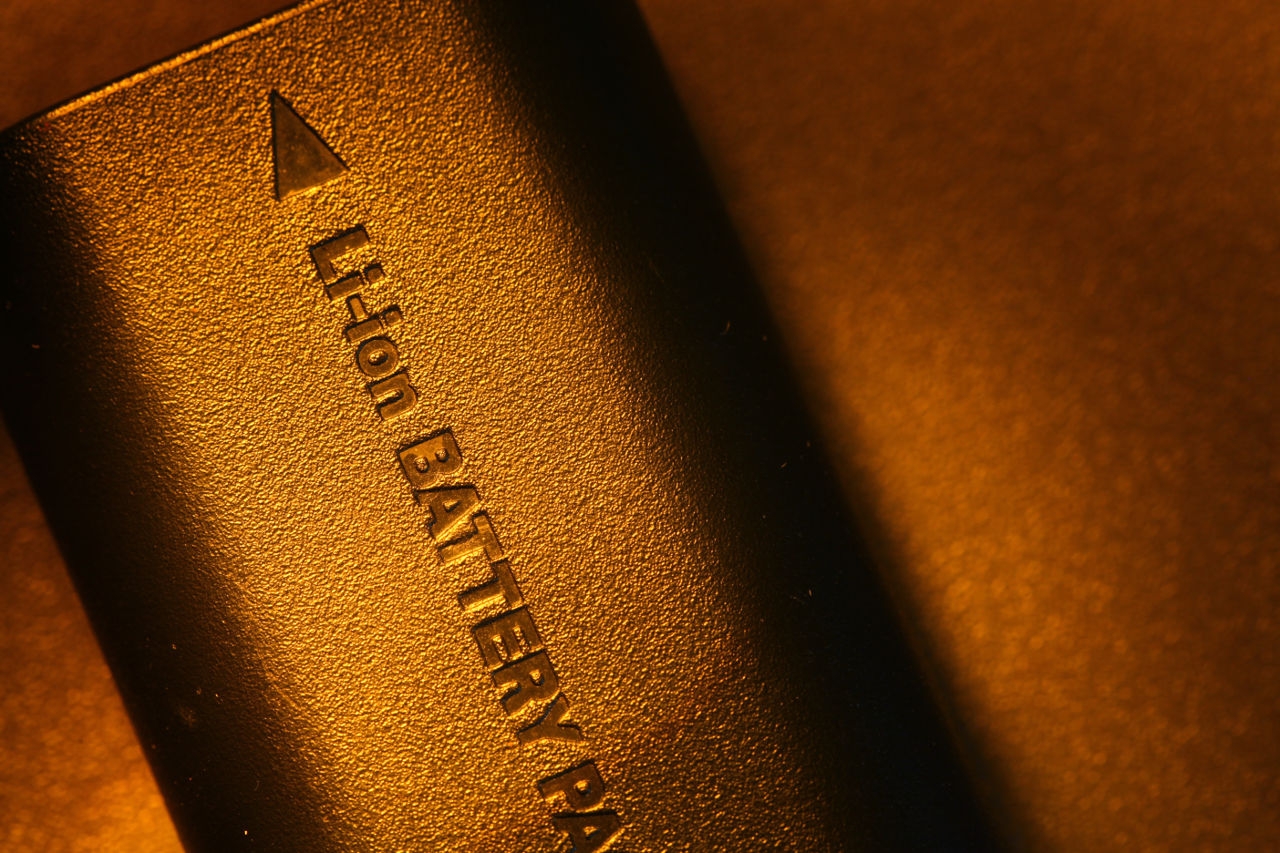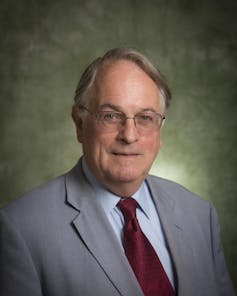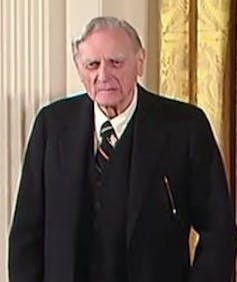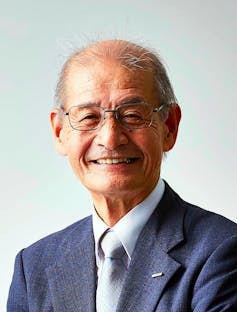When a Nobel Prize winner in chemistry dedicates a battery
It is no coincidence that the 2019 Nobel Prize in Chemistry was awarded to the pioneers of lithium-ion batteries.
Laure Monconduit, University of Montpellier

This type of battery now powers smartphones and laptops, cameras, MP3 players, and the vast majority of electric and hybrid vehicles currently on the market, while opening up new horizons in renewable energy storage. In other words, as Jean-Marie Tarascon, professor at the Collège de France and holder of the Chair of Solid State Chemistry and Energy, recently stated on television, "it is one of the great advances of the last century, along with the transistor and fiber optics."
Three men for a Nobel Prize
Three men were awarded this prize on October 9: Anglo-American Michael Stanley Whittingham, American John Bannister Goodenough, and Japanese Akira Yoshino. These three researchers, who are known to all scientists working in chemistry and physical chemistry of materials, have been enriching the field of energy storage for over forty years. And, of course, they are behind many advances in the field of lithium-ion batteries.
It all began in the 1970s with the work of chemist M. S. Whittingham. After graduating from Oxford University with a bachelor's, master's, and doctorate degree, he first completed a postdoctoral fellowship at Stanford University before joining Exxon Research and Engineering in 1972. There, for 16 years, he worked on developing energy sources that did not rely on fossil fuels. He then joined Schlumberger, before being appointed professor at Binghamton University in 1988.

Author provided
Based on research into superconducting materials, he discovered one that was particularly interesting: titanium disulfide (TiS2). As early as 1965, German chemist Walter Rüdorff had demonstrated the possibility of intercalating lithium ions (Li+) in solution inTiS2. However, French chemist Jean Rouxel, followed by M. S. Whittingham himself and his colleague at Exxon, American Fred R. Gamble, subsequently proved that it was possible to intercalate more lithium into titanium disulfide than Rüdorff had done, without significantly altering the crystallographic structure of the material.
In fact, as early as 1973, M.S. Whittingham discovered that intercalating lithium into an electrochemical cell was a reversible phenomenon. Titanium disulfide, with its lamellar structure, could therefore be an ideal material for a rechargeable lithium battery. The principle was as follows: lithium ions, released by an anode (negative electrode) made of lithium in metallic form, are stored at the cathode (positive electrode) between the layers of titanium disulfide. The first rechargeable lithium battery was born, with a potential greater than 2 volts.
A new material: cobalt oxide
For his part, American J.B. Goodenough obtained his PhD in physics in 1952 at the University of Chicago. Initially a researcher at the Massachusetts Institute of Technology (MIT) laboratory, he worked with his team on computer RAM, also known as random access magnetic memory. He then became head of the inorganic chemistry laboratory at Oxford University, where he developed a material for the cathode of rechargeable lithium-ion batteries (cobalt oxide), before joining the University of Texas at Austin in 1986, in the mechanical and electrical engineering departments of the Cockrell School of Engineering. He remains very active there, having recently published, with his team, very promising results for a battery in which the electrolyte would be solid, resulting in improved safety.

Obama White House Archives
His work on cobalt oxide, replacing titanium disulfide, paved the way for batteries capable of delivering a voltage of 4 volts. And this cathode material has been used in almost all commercial batteries. However, this battery, which uses a lithium metal anode, proved to be too dangerous, with a risk of lithium dendrites forming, which can bring the cathode and anode into contact, causing short circuits or even explosions. It was therefore quickly withdrawn from the market.
The first lithium-ion battery to be marketed
The last of the three researchers awarded the Nobel Prize in Chemistry, Akira Yoshino, first graduated in 1972 with a master's degree in engineering from Kyoto University, before devoting himself to archaeology for several years. But he returned to his first love and obtained a doctorate in engineering from Osaka University in 2005. In 1986, he developed the first commercially viable lithium-ion battery, in which the overly reactive lithium anode was replaced by a carbon-based anode (petroleum coke), into which lithium ions could be inserted.

Ministry of Education, Culture, Sports, Science and Technology website, CC BY
Replacing lithium metal with carbon has extended battery life while improving safety. But above all, it was an essential step towards bringing the technology to market. Sony was the first to commercialize this technology in 1991, using cobalt dioxide and lithium as the cathode and carbon as the anode. Many other companies followed suit, including Toyota, LG, Samsung, Panasonic, and others.
With a veritable race for batteries now underway around the world, the 2019 Nobel Prize in Chemistry highlights the importance of research in the field of energy storage. This research is all the more important given the current need to store energy in a "clean" way, without resorting to fossil fuels, thereby combating global warming.![]()
Laure Monconduit, Researcher – DR1, AIME Team, University of Montpellier
This article is republished from The Conversation under a Creative Commons license. Readthe original article.